Some of my readers have asked for a guide on how to properly fell a tree, so in this post you will learn how to safely cut down a tree on your own.
Felling a tree is definitely not an easy thing to do, in most cases the smartest thing to do is to hire someone who does the work for you so nothing goes wrong. However, if you are determined to do it yourself, you will learn how to do it with this guide.
Table of Contents
Equipment Needed Before Tree Felling
Having the right equipment and knowledge of how to cut is the most important thing for a safe felling. Below I’m listing some of the main gear you’ll need and the get into the actual steps of how to properly fell a tree.
Safety equipment
Safety first, especially when it comes to felling trees and using a chainsaw. It must be taken seriously and can protect you from serious injures. For a full list and our recommendations, read: All types of protective and safety equipment for chainsaw use.
Some of the most important safety equipment you will need are:
- A helmet – It is needed to protect your head from falling branches and the like.
- Safety Work gloves – Specially designed to stop chainsaws if you slip.
- Goggles – To protect the eyes from small chips and the like.
- Work Clothes – Very important to protect the legs if something should go wrong with the chainsaw.
- Mobile phone – If you carry out the work yourself, it is important that you have a mobile with you if something should happen.
In addition to safety equipment, you will also need some other tools to succeed with a tree felling.
Felling Equipment
- Chainsaw – Needed to saw down the tree.
- Wedge – To make sure the tree does not pinch the chainsaw.
- Ax – Needed to drive the wedge into the tree and pruning.
Now you have everything you need to cut down a tree, but you are not quite ready to start sawing yet, as there are still some preparations we have to make before cutting.
Preparations for Tree Felling
It is very important that you prepare well for a tree felling as there is a lot that can go wrong.
The tree should be felled safely in the direction you want it to fall. It is important that it does not fall on nearby houses or roads.
Start by determining the felling direction of the tree. Notice various factors that can affect the fall such as:
- Wind direction
- Wind strength
- The slope of the tree
- The slope of the ground
- Obstacles
Also check if the tree is damaged in some place so you avoid unnecessary accidents later.
Try to fell the tree in the direction the tree wants to be felled, i.e. the direction the ground or the tree is already leaning.
Determining the fall zone
Trees are taller than you think and will fall longer than you anticipate, so make sure you calculate out enough space on the ground.
You can estimate how far a tree will fall by using the simple ax trick.
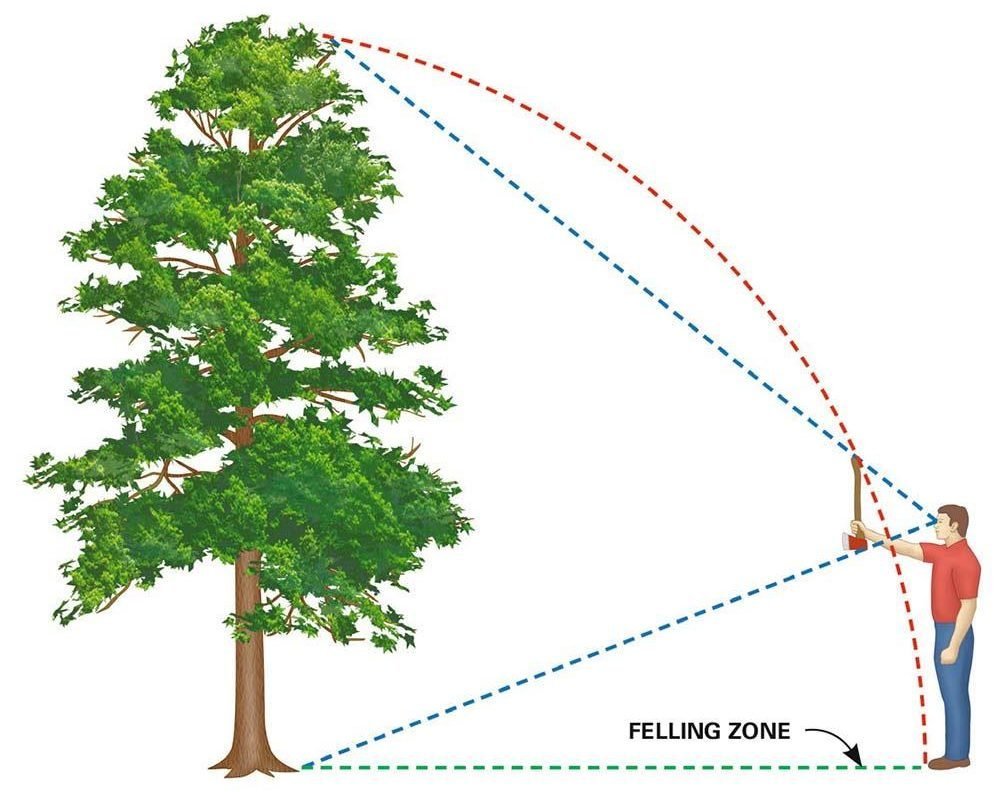
- Hold an ax with a straight arm right in front of you.
- Close one eye and back away from the tree until the top of the ax is level with the top of the tree and the bottom of the ax is level with the base of the tree.
- Take a few more steps back for extra safety, it’s just an estimate.
- This is where the treetop should land, roughly.
Retreat route
Now that you have determined the felling zone, you can start clearing away shrubs and small trees that may be in the way of felling. This is important, as you need to be able to back away once the tree is falling.
Also clear around the tree so that you can work unhindered and make sure you have a retreat route planned when the tree falls.
The retreat path should be about 45 degrees behind the tree (obliquely backwards) in both directions, so clear away everything there.
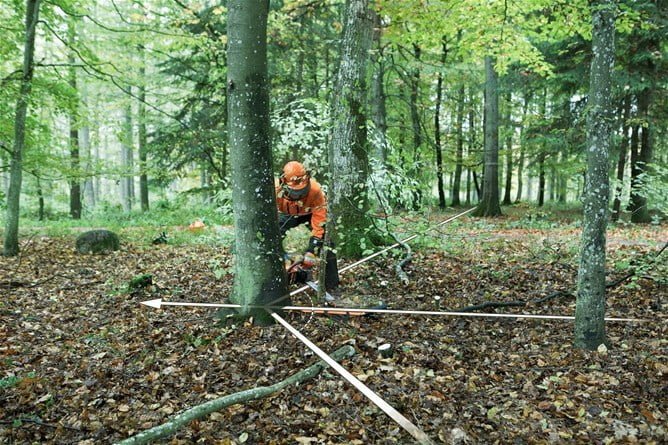
Pruning and clearing
Before you start sawing down the tree, it can be a good idea to remove various low branches that may be in the way.
Never saw over shoulder height with a chainsaw, and use the trunk as a guard between you and the saw.
The safest way to prune is to work with the chainsaw (underside of the blade) from top to bottom.
When this clearing is done, you are ready to fell the tree by following the steps below.
How to Saw the Tree
Now we’re finally getting to how you actually cut down a tree.
It can be more difficult than it looks, so take it slowly and carefully so nothing goes wrong.
A safe tree felling requires great accuracy and precision, by planning in advance you can avoid many mistakes.
With the directional cut or also called face cut you determine the felling direction and with the felling cut you cut down the tree.
Between these two cuts is the “hinge” which in a safe way guides the tree down to the ground towards the intended target.
It will all look like the picture below and the your goal is to make it as similar to the image as possible.
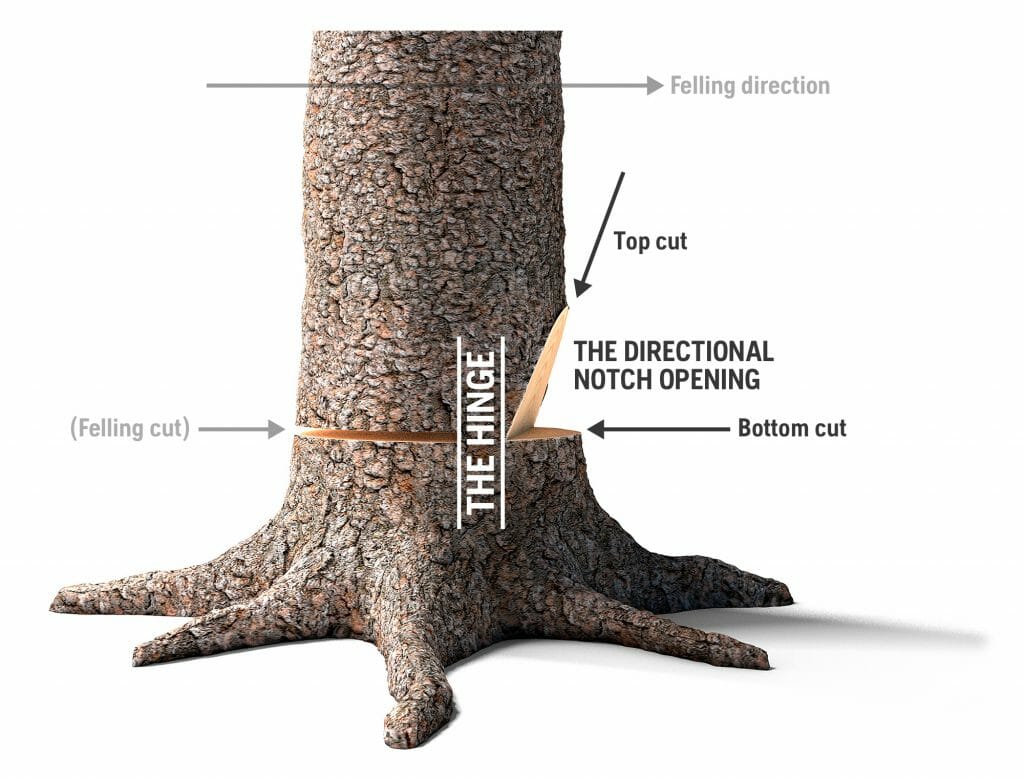
Notch cut
The notch cut is what will make the tree fall in the direction we want it to fall.
The most important thing, however, is that you do not saw the straight edge too far into the tree. It should not be more than 15 – 20% of the diameter of the trees trunk.
The directional cutting takes place in two steps, the upper cut and the lower cut.
Step 1: Saw a cut straight into the tree about 15 – 20% of the diameter of the tree.
Step 2: Saw obliquely from above with a 60 degree incline into the first incision., it should meet the bottom cut exactly.
Now you should have a good directional cut ready and can now start on the felling cut.
The felling cut
The felling cut is the cut that will make the tree fall and it is now that you need to
be extra careful.

Make sure you stand at an angle behind the tree and that your retreat paths are cleared and ready to use.
The felling cut must be at the same height as the lower directional cut. The felling cut should not go all the way to the directional cut but there should be a space between them, that will act as a hinge when the tree is falling.
It is this hinge that is most important when it comes to a safe and controlled felling as it is this hinge that will guide the tree until it reaches the ground.
The felling cut should be evenly sawn and its length should be at least 80% of the tree’s diameter at chest height. See picture:
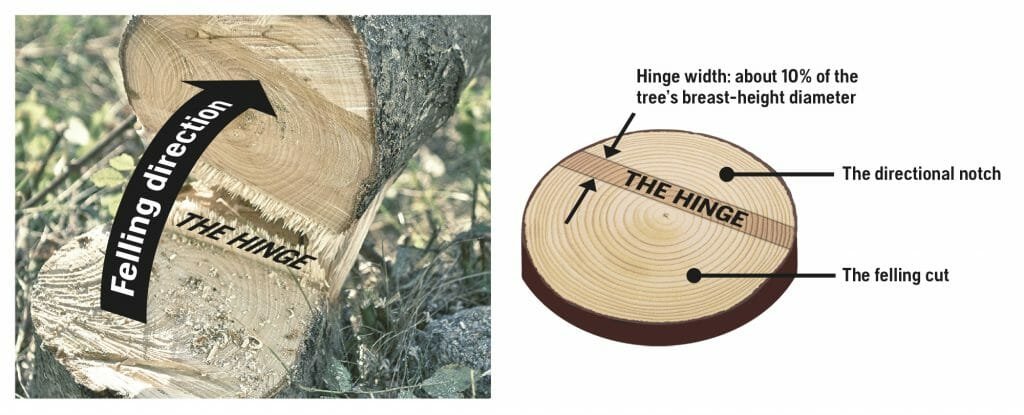
Now we are ready to saw the felling cut.
Note! If you are a beginner, we recommend that you do not cut down trees with a larger diameter than the length of the saw blade, as it is easier and safer to cut down the tree with a simple felling cut straight from behind.
- Start sawing a straight cut in the tree with your straight edge.
- As soon as you can, you should drive a wedge into the cut so that the tree does not lay against the chainsaw.
- Saw until you reach the size of the previously described recommended hinge. If the tree does not fall now, drive in the wedge with the ax to make the tree tilt and fall in the intended direction of fall.
- As soon as the tree starts to tilt, you should remove the saw and turn it off. Then go diagonally backwards via your retreat path with one eye on the tree.
Extra tip: Have a friend standing behind the tree who looks up at the tree and can notify you as soon as the tree starts to fall and who keeps an eye out for falling branches.
Congratulations, you have now cut down the tree!
If the tree gets stuck in another tree, it is important that you do not try to cut it loose.
Instead, try using a winch to pull it off the other tree. You should never do this work yourself, but use a friend who can help you.
Felling Done
Now you know what to do to cut down a tree in a safe and controlled way.
Do not be afraid to ask for help, felling a tree is not as easy as it sounds and if you are still unsure, the correct approach is to hire professionals.
Also, make sure you get the correct equipment and gear before you attempt to fell a tree!
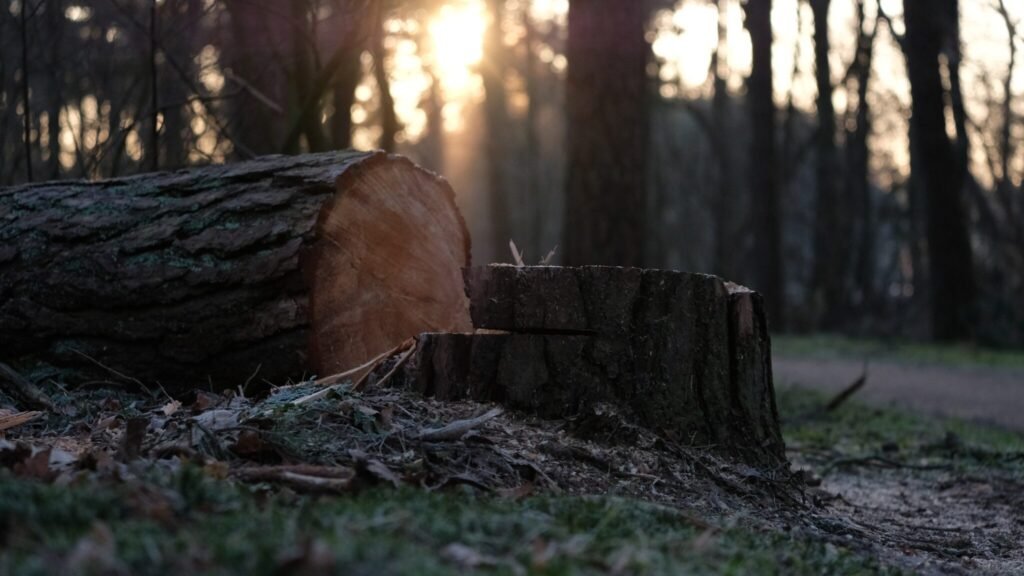

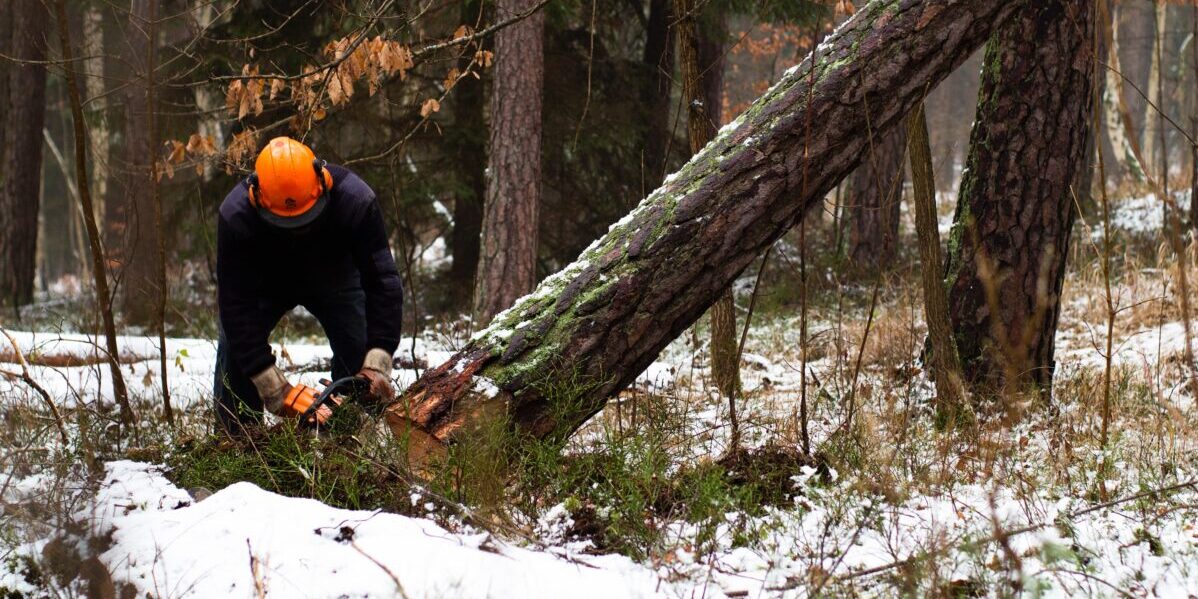

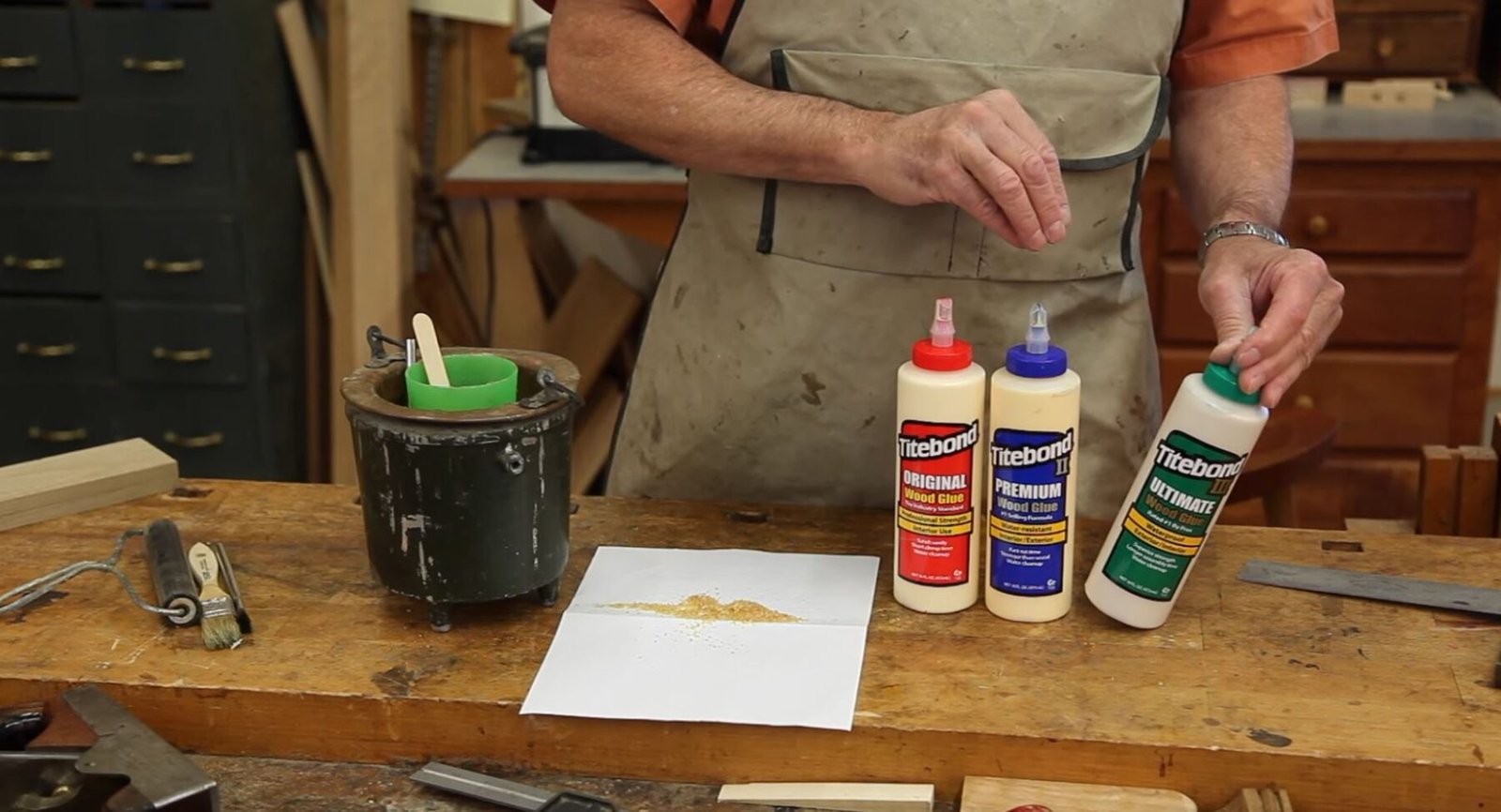

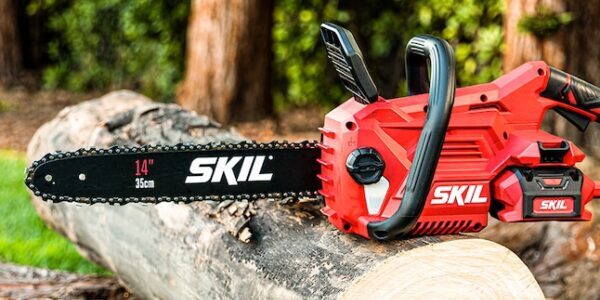
Only wanna admit that this is very helpful , Thanks for taking your time to write this.